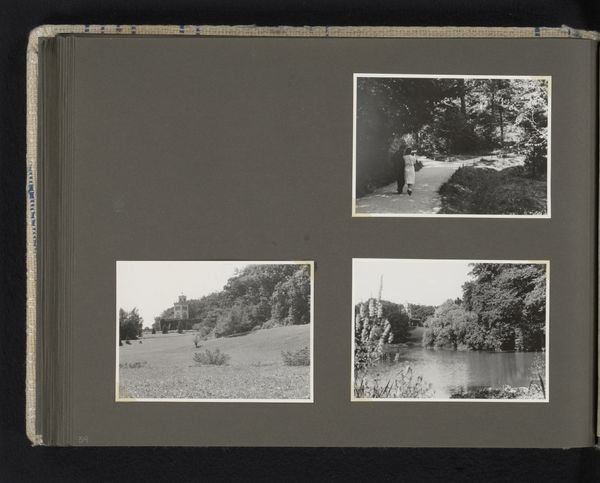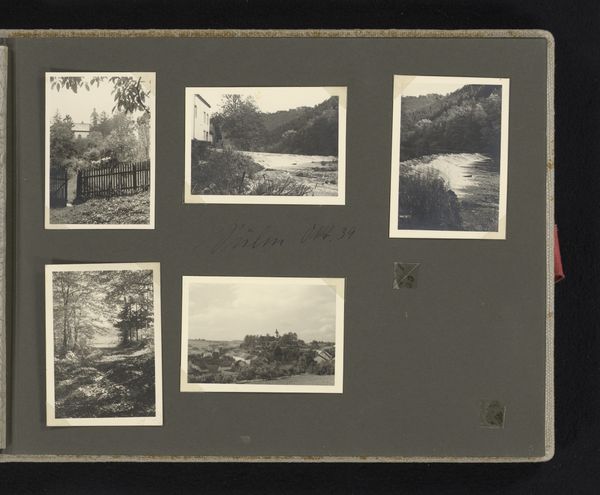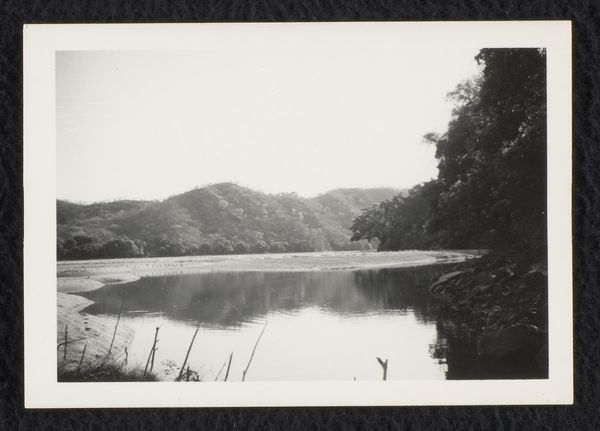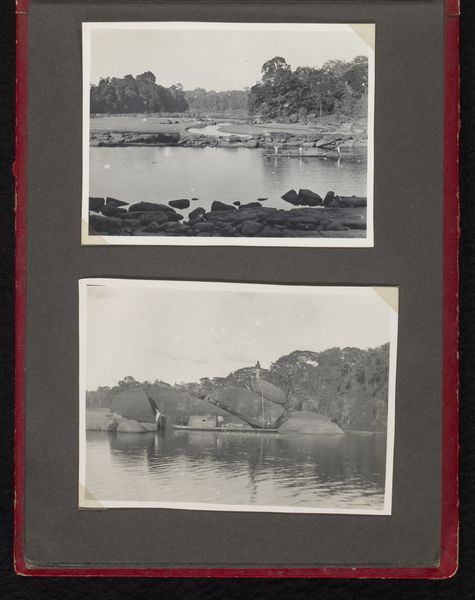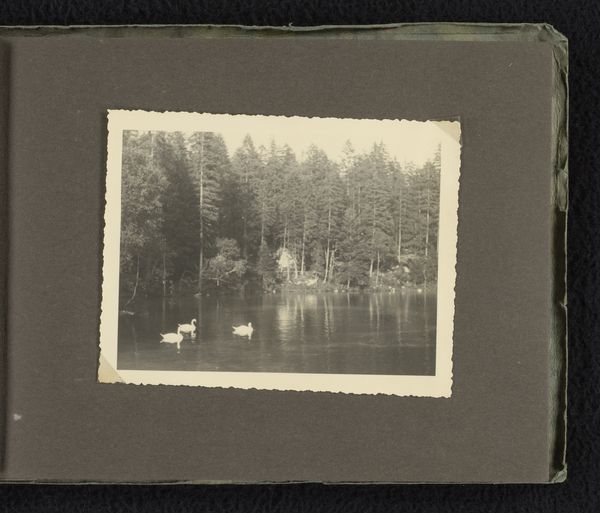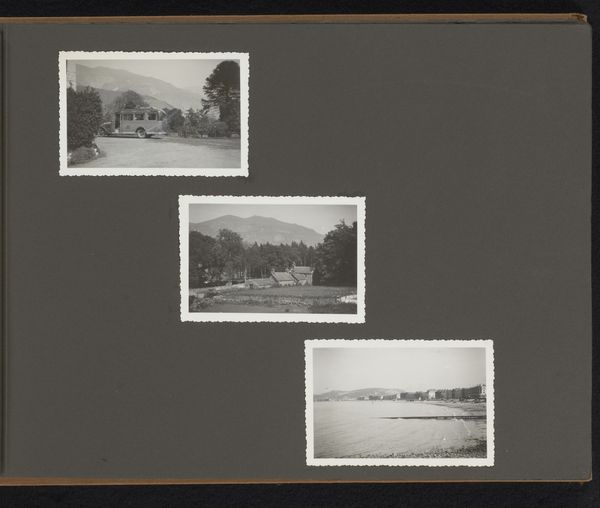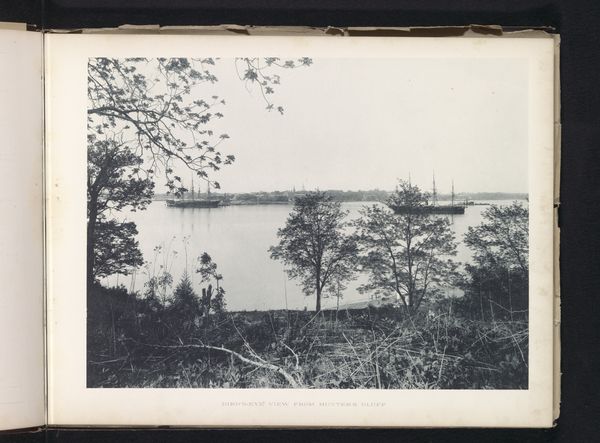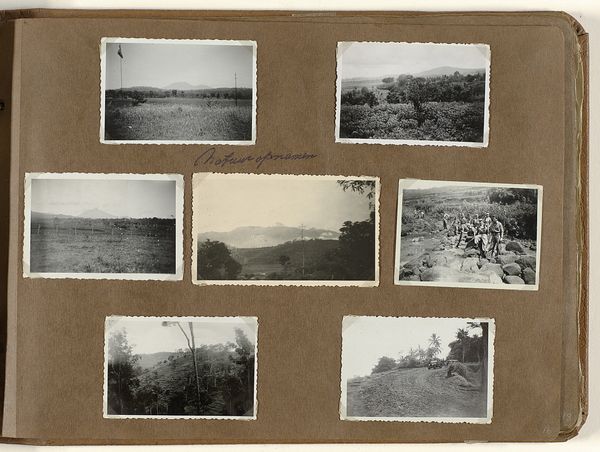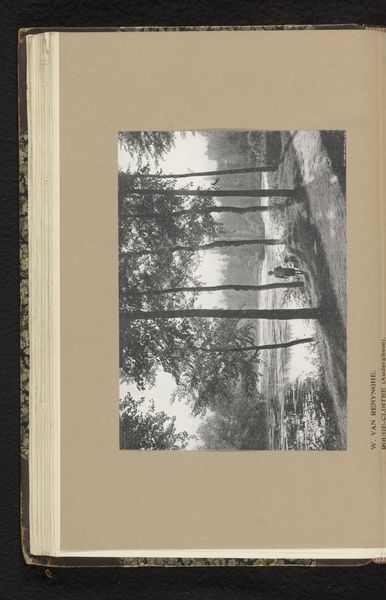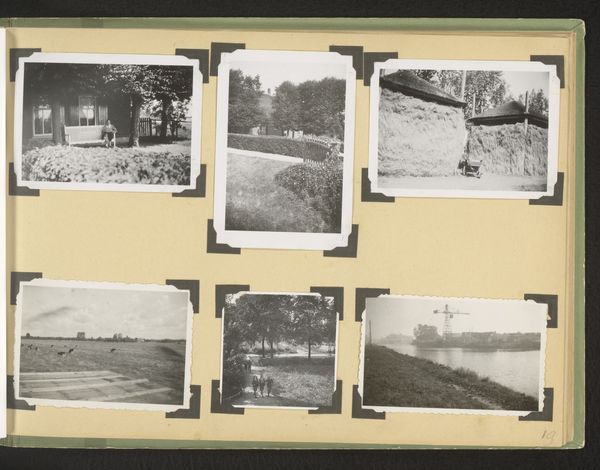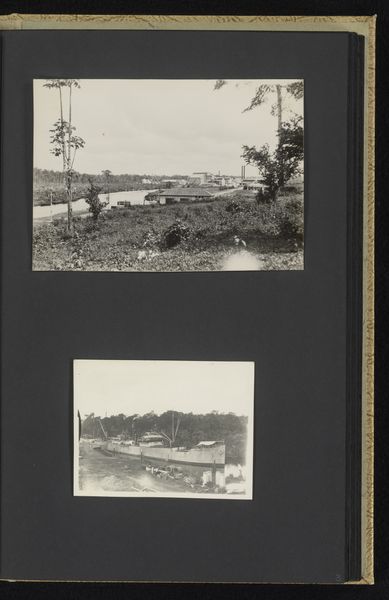
photography, gelatin-silver-print
#
lake
#
landscape
#
photography
#
gelatin-silver-print
Dimensions: height 128 mm, width 90 mm
Copyright: Rijks Museum: Open Domain
Curator: What a contemplative scene! The way the gelatin-silver print captures the light creates a delicate texture; it feels like looking into the past. Editor: This landscape photograph, titled "Meer in Zuid-Afrika" or "Lake in South Africa", was taken sometime between 1967 and 1971 by Willem Jacob van den Berg. The materials employed – photography and specifically the gelatin-silver process – speaks to its production in the context of available resources and technology of the time. The photo also provides a visual access to understanding post-colonialist South Africa in the late 1960s. Curator: I see that too, but let’s consider the actual landscape presented here. The framing trees pull our gaze toward the water; you have to wonder about access, both visually within the image but also about physical and social access. Was this space equally available to everyone at the time of its making? Editor: Exactly. The stark contrasts in this gelatin print also hint at broader themes of inequality, particularly along the lines of race and class. I wonder if the quietness of the landscape, the stillness, works to disguise or perhaps even highlight socio-economic disparities. Curator: Right, the photograph is documenting something quite particular about land and its representation. Was photography a widely accessible medium, or did it serve particular class interests through its consumption? The labor and access required to produce photography may make landscape itself something of an elitist exercise here. Editor: We need to ask ourselves whose view we're granted, which narrative about the land is centered, and whose voices are deliberately erased or marginalized within that construction of landscape. This peaceful surface belies so much turmoil. Curator: Thanks, it enriches the viewing when one recognizes the material conditions behind seemingly ‘simple’ representations. It moves away from celebrating individual ‘genius’ toward understanding collective, collaborative production of meaning. Editor: Thinking intersectionally encourages that shift. Reflecting on history, inequality, gender, and class alongside technical decisions in photography helps to deepen the viewer's engagement beyond a surface-level appreciation.
Comments
No comments
Be the first to comment and join the conversation on the ultimate creative platform.
